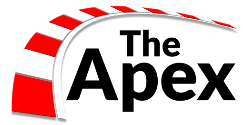Rainout Does Little to Diminish May’s Momentum

This year’s Month of May at Indianapolis Motor Speedway began, as it has on eight previous occasions, with a race on the road course.
The 2023 edition of the event, entitled GMR Grand Prix, featured several hallmarks of a modern and competitive NTT IndyCar Series race weekend — a first-time pole winner, varying strategies — including whether it would be a “black” or “red” race, and a dominant performance by a former series champion who became the fifth different victor in five races.
Perhaps best of all, this prelude to the Indianapolis 500 was paused by just one yellow flag, making it more about skill than surviving attrition, as was the case in the caution-filled 2022 running.
The Grand Prix served as an aptly exciting kickoff to Indy 500 festivities at the Speedway, which were then dampened by rain on May 16, the first official practice day for the 107th running of the Greatest Spectacle in Racing. Still, with so many intriguing storylines coming out of the fifth round of the season and many more of note among the 34 Indy 500 entrants, the season’s upward trajectory seems unlikely to be curtailed by inclement weather.
One key outcome of the GMR Grand Prix — made even more significant by a lack of double points on offer in the “500” as it was with every race on the 2.5-mile oval since 2014 — is the state of the fledging championship.

Alex Palou’s victory by 16.8 seconds over Pato O’Ward thrust the Chip Ganassi Racing driver to the top of the driver ranking by six points, while O’Ward maintained second — where he’s been since the third round in Long Beach.
A finish of eighth for previous points leader Marcus Ericsson dropped him to third, yet with 12 races remaining, less than 50 points separate the top seven drivers from Palou to Scott Dixon. Notably, 50 is the number of points awarded for a race win excluding bonus points for pole position, leading a lap, and leading the most laps.
Extra points are available for drivers who qualify on the first four rows of the starting grid, with 12 points for the pole and one point for a start from the outside of Row 4. With all races carrying equal weight this year, those additional qualifying points could prove extremely valuable when the championship wraps up at WeatherTech Raceway Laguna Seca in September.
Outside the chase for the Astor Cup, other points of interest abound as May continues to ramp up to May 28, when 33 drivers will vie to have their likeness emblazoned on the Borg-Warner Trophy, including the return of Last Chance qualifying thanks to 34 car and driver combinations on the entry list.
Predicting who will be left out of the traditional 11 rows of three remains tricky. Yet, keen observers of the practice sessions leading up to the first day of qualifications on May 20 might gain valuable insight. Fast Friday practice, when turbo boost levels are raised to qualifying specifications and no-tow speeds are the talk of the day, will provide the most precise picture of who could find themselves in the Top 12 or fighting for a place in the last row.

Regardless of who’s in and who’s out, a field of drivers stacked with talent will make for a 500-mile race no less intriguing than those that have come before.
Nine entered drivers have won the race before; assuming they all take the green flag, 27% of the grid will be gunning for a repeat performance. All eyes will be on Helio Castroneves, who, with a win, could break two records: the most Indianapolis 500 victories with five and the oldest driver to win at age 48. Tony Kanaan, who’s the same age as Castroneves, could also claim the title of oldest winner with his second drink of milk at IMS. Takuma Sato, a two-time winner, could join the three-time club while six others are looking for their second victory: Dixon, Ryan Hunter-Reay, Alexander Rossi, Will Power, Simon Pagenaud, and Ericsson.
Beyond the former winners, there’s a secondary group of accomplished IndyCar champions and race winners. Among them are series champions Palou and Josef Newgarden, who are both missing a Brickyard triumph on their career résumés, and winners who race full-time like O’Ward, Scott McLaughlin, Felix Rosenqvist, Graham Rahal, Rinus Veejay, Colton Herta and Kyle Kirkwood. Then there’s the contingent of drivers who are entered in the “500” that aren’t racing the rest of the season and could provide a surprise victory, including Marco Andretti, Stefan Wilson, and the returning Katherine Legge.
Complicating matters for the established racers is this year’s upstart rookie class with three season-long rookies — Sting Ray Robb, Benjamin Pedersen, and Agustín Canapino — mixing it up with one-off entrant RC Enerson, racing for Abel Motorsports. As Rossi demonstrated in 2016, rookies can’t be counted out.
With many days of practice and qualifying ahead, all 34 entered drivers will take to the famed racetrack with two goals: making the race and finishing first. No amount of rain, snow, sleet, hail, wind, or any other calamity Mother Nature sees fit to bestow on the corner of 16th and Georgetown can diminish the fire the burns within.
Winning the Indianapolis 500 stands alone as an achievement akin to immortality, with the victory forever ensconced in the annals of American open-wheel lore. One will stand above the rest, standard points payout be damned, and take that experience wherever their journey leads.
Ben was hooked after witnessing Dario Franchitti's victory at the 2009 Iowa Corn Indy 250 and began providing media coverage from IndyCar events in 2015. If IndyCar is on track, he can be found live-posting and updating The Apex's Race Reports from his iPad Pro.
